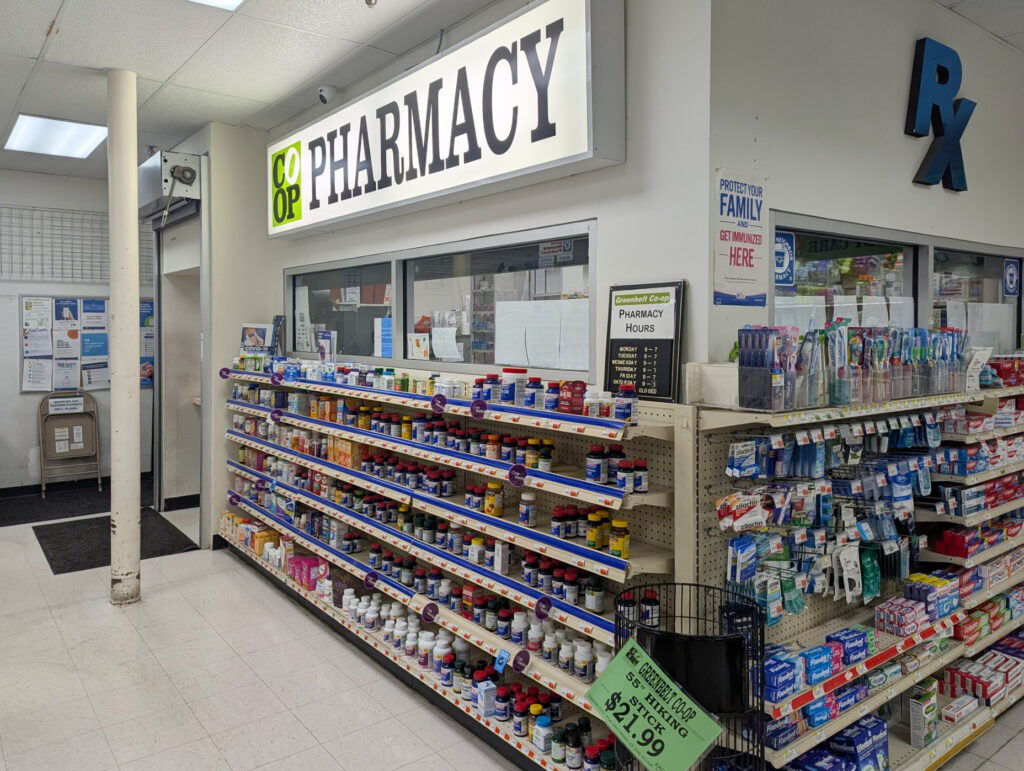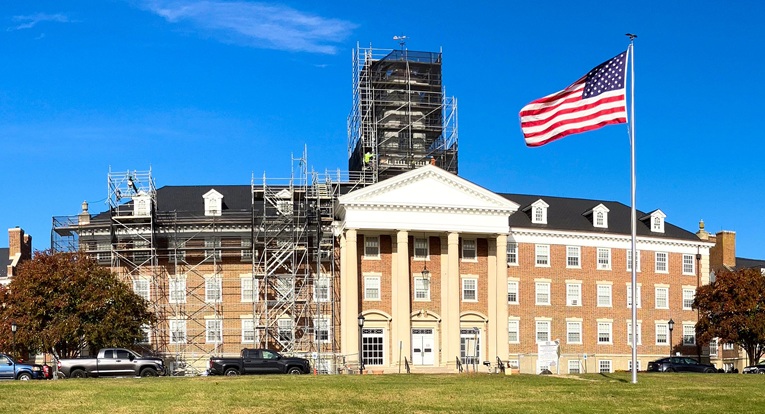Recently government officials from the city of and county of San Francisco reached out to Greenbelt, which is home to the nation’s only co-operative pharmacy, searching for alternative business models and ways the government can support independent pharmacies. Counties nationwide are beginning to confront a growing problem of “pharmacy deserts,” areas where residents lack easy access to pharmacies, particularly in rural or poor communities. “After a large increase in [pharmacy] access for 20 years, access is potentially in jeopardy,” wrote the analyst from San Francisco. Unfortunately, the Co-op Pharmacy has been facing similar economic pressures and weighted corporate competition over recent years. With unpredictability from the Trump administration and a vaccine skeptic heading the nation’s Health and Human Services Department, this year has added political challenges, too.
The Nation’s Only Co-op Pharmacy
Greenbelt’s first Co-op pharmacy was established by the Consumers Distribution Corporation as what would be, to the best of their knowledge, the first co-operative pharmacy in the country (see page 3 of the March 16, 1938, issue of the Greenbelt Cooperator). Today Greenbelt’s cooperative pharmacy is one of several pharmacies in Greenbelt, including three CVS pharmacies, one located inside Target in Beltway Plaza and one that’s open 24/7. The Greenway Center Safeway also has pharmacy services, offering shopping discounts with vaccinations. Incentives like that, which larger stores can afford to offer, and partnerships between insurance agencies and large corporate pharmacies, add to a field weighted against small, independent pharmacies. Insurers partnering with major corporate chains can offer reduced costs to the patient, enhance convenience with access through nationwide chains and shipping options, but they are also leading to market dominance and conflicts of interest.
Yet, “the challenges of pharmacies are starting to affect the big players, too,” Dan Gillotte, general manager of the Greenbelt Co-op Supermarket and Pharmacy, told the News Review, “so they’re starting to close stores, which then causes some access issues. The chains are closing stores at a relatively rapid clip,” he said. “For sure independent pharmacists are suffering and closing all around.” RiteAid, CVS and Walgreens have closed thousands of stores over recent years, targeting the least profitable ones and disproportionately impacting rural and low-income areas and communities of color. Today, pharmacy options from Amazon and Costco, for example, provide even more competition to neighborhood pharmacies.
Uneven Field
The Co-op Pharmacy has roughly the same number of prescriptions filled weekly this year compared to last, says Gillotte, so it’s a consistently utilized pharmacy. “But there’s also a lot of pressure on people to use other pharmacies. Their insurance companies urge them to use other companies and this is through various deals that are worked out with CVS or Walgreens or RiteAid by insurers and some insurers that are owned by those conglomerates,” said Gillotte. For example, the insurer Aetna is owned by CVS Health. In a cross-sectional study of Medicare Part D claims data for 10,455,726 patients published this year, “34.1 percent of all pharmacy and 37.1 percent of specialty pharmacy spending occurred through Cigna-, CVS-, Humana- or UnitedHealth Group-owned pharmacies in 2021” and “each firm steered plan enrollees to their own pharmacies” (Kaki, Navangul, Luo et al.).
Costs
Running a pharmacy comes with a lot of uncertainty. Unlike other businesses that can set their product pricing, drug prices are beyond the Co-op’s control, explained Gillotte at a May Co-op Board meeting.
A recent shift for the small pharmacy is that insurance companies want 90-day supplies of drugs, says Gillotte, so they have to keep more inventory on hand in order to fill those larger orders. “We pay for it well before we get reimbursed for it,” said Gillotte, “so it’s just kind of a cash pressure that happens for independent pharmacies.” Sometimes customers place orders and don’t pick them up for a while; unlike other product purchases where you pay upon ordering, for medication, the pharmacy is paid at pickup.
Over recent months, President Trump has advocated lowering drug prices. In May he signed an executive order “to put Americans first by lowering drug prices and stopping foreign free-riding on American Pharmaceutical innovation.” Lower costs to consumers could be a good thing, but it’s unclear how that would be achieved. If it involves applying downward pressure on pharmacies, that could be disastrous, says Gillotte.
In addition to the fluctuating drug costs that are out of the pharmacy’s control, payroll costs are substantial for highly trained pharmacy staff, said Gillotte. The Co-op maintains a much higher pharmacist to technician ratio than national chains, which adds to their costs.
Immunizations
One of the areas in which pharmacies are able to do well financially is offering vaccinations. “We’ve done our best to be a great place to get immunizations,” says Gillotte. Unfortunately, he said, the Trump administration is moving away from supporting vaccines. For example, the government no longer recommends Covid boosters for people under 65 or for children and pregnant women. Gillotte says this national policy can play out at a store level because fewer people will get vaccinated if their insurance doesn’t pay for it and they’re less likely to if it isn’t recommended. The Centers for Disease Control (CDC) vaccine list shows the cost for a Covid vaccine without insurance is either $136.75 or $141.80, depending on the brand, for children over 12 and adults.
“In some respect, the insurance companies take their cue from the CDC,” says Gillotte. “It’s going to have a real effect on all pharmacies, I think,” Gillotte said of changes to vaccine recommendations. “When they invite public comment, we can make public comment but there’s not much else we can do about it,” he said.
The Future
“We could have [more] customers if the playing field weren’t tilted in the favor of the chains,” Gillotte told the News Review, “and there doesn’t seem to be a lot that we can do about that except we try to have better service, and we’re a little more reasonable to deal with and we do whatever we can to make it worth people’s while to utilize our service. But when it comes just down to dollars and cents, there are incentives happening that are well out of our control.” The Co-op has the capacity to serve more patients, says Gillotte.
Asked how the pharmacy is doing financially, Gillotte was unwilling to break down performance by departments. “There was a period of time when it was more of a contributor to our cash flow,” said Gillotte. “It’s still contributing. It’s got its challenges and it’s much more complex and regulatorily difficult than any other part of the business but it’s still contributing and we’re still committed to making it work.” They receive a lot of positive feedback about the pharmacy and believe it’s “a professional strength for our Co-op to have it,” said Gillotte. “We’re glad to serve our community in that way, and we can serve more folks if they wanted to come our way. ”




